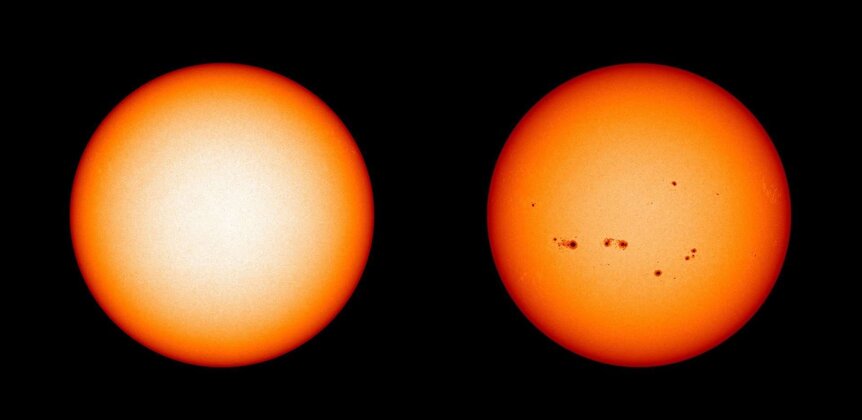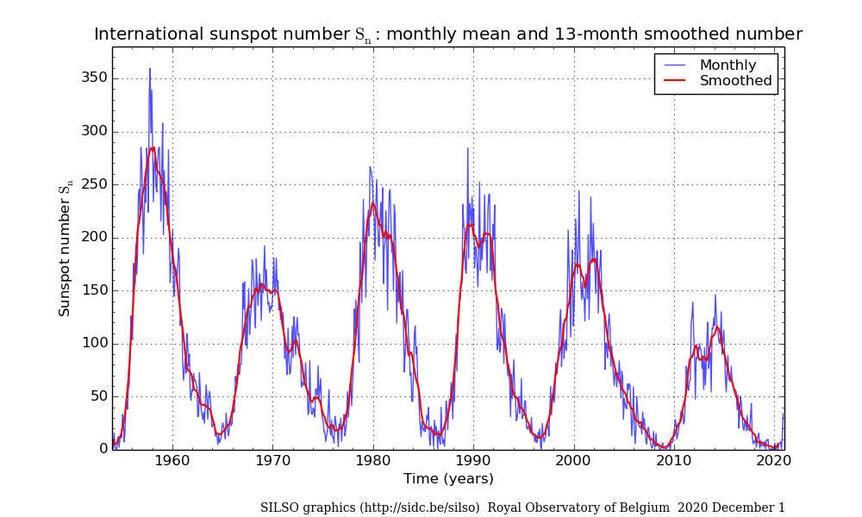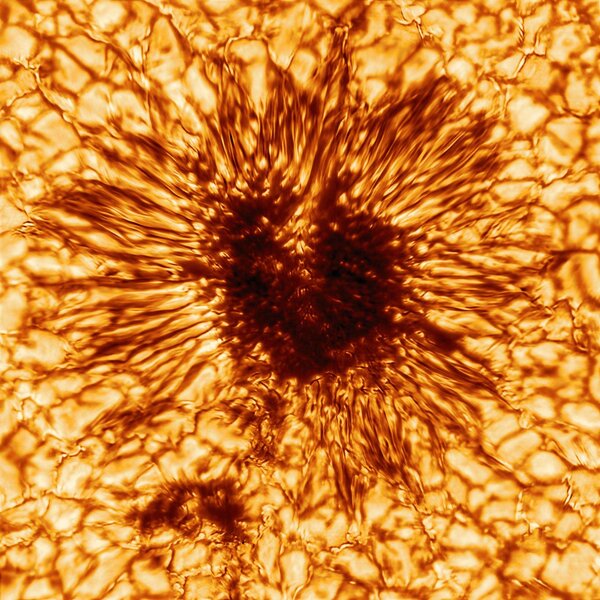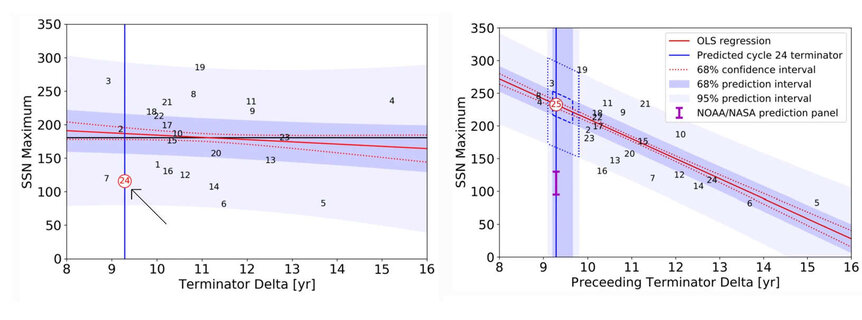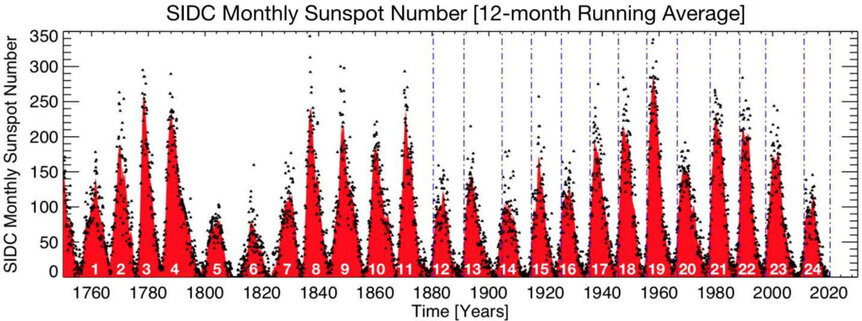Create a free profile to get unlimited access to exclusive videos, sweepstakes, and more!
Will the Sun's current sunspot cycle fizzle or crackle?
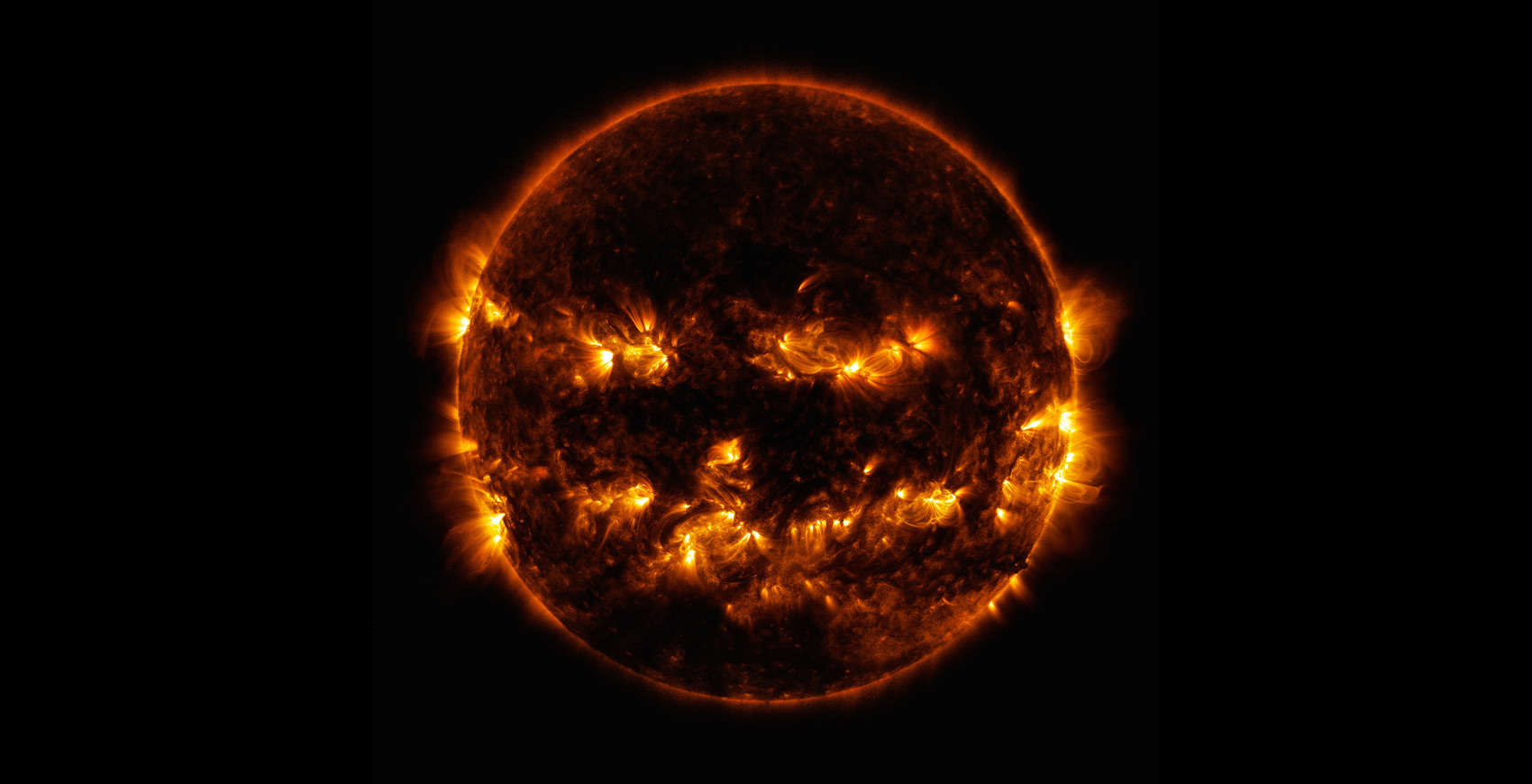
Recently, a team of solar scientists announced that they predict the Sun's current magnetic cycle, which just got started about a year ago, will be pretty mild, much like the last one. I wrote about this at the time, because the Sun's behavior can have profound effects on Earth, including damaging satellites, putting astronauts in space in danger, and causing widespread power outages on Earth. The ramifications can be very, very serious.
But hold the presses! Another team of solar astronomers has just published their own study, and, based on their rather unusual hypothesis of the Sun's behavior, predict the current cycle could be very strong, in fact among the strongest ever seen!
Who's right? Well, we'll find out soon enough.
The Sun goes through a cycle where its magnetic activity grows and weakens on a roughly 11-year period (and in fact the polarity reverses each cycle, with the north and south magnetic poles flipping, so it's really a 22-year cycle). Sunspots are one aspect of this magnetic activity; as the cycle goes on and the activity grows, we see more dark sunspots on the Sun's surface. We also see more storm activity like powerful explosive flares and huge coronal mass ejections (CMEs).
It's not well understood why this cycle exists, or what's going on deep inside the Sun to produce it, or why sometimes one cycle is longer or shorter. Mostly we have to extrapolate from what we see on the surface. We also don't know why the strength of the activity changes from cycle to cycle, but sometimes we see fewer sunspots, and sometimes many more.
We just came out of Cycle 24, which was fairly weak as they go, with fewer sunspots — it maxed at about 120 seen at the same time. The Sun's face was then blank for a long time until we started seeing spots again in January 2020, and a big one just last week. It's not clear what will happen as we approach the next peak in mid-2025.
That's where the second team of astronomers comes in; they disagree with the consensus that activity will be like the last cycle. They base this on past observations of the Sun's complex magnetic behavior, and have posited an odd hypothesis on what's going on with the Sun.
We've known for a while that when a cycle starts up, sunspots tend to form at mid-latitude (around 55° from the Sun's equator) in both of the Sun's hemispheres, and then over time we see them forming closer and closer to the equator. So if you look early in the cycle you see spots around 55° latitude, and a year later they may be down to 50°.
The band in the northern hemisphere has the reverse magnetic polarity from the one in the south. Eventually, when they meet near the equator, they cancel each other out. The scientists call this the termination event, and when that happens the cycle is over.
But here's where it gets complicated. It takes about 19 years for a cycle's bands to get to the equator, and when it's about halfway there another set of bands forms at 55°. They can see this as an increase in solar activity at that latitude, flashes of extreme ultraviolet light that occur above the surface that indicate the presence of deep doughnut-shaped (toroidal) bands of magnetic fields deep beneath the surface.
Sometimes, the migration of these bands down through the mid-latitudes slows. It's not clear why. But the scientists posit that this slowdown allows the bands meeting at the equator to interact for longer periods. This tends to make the solar minimum (when magnetic activity is weak and there are few to no spots) last longer, but they noticed over their observations that it also means the next cycle is weaker, too, producing fewer sunspots.
Conversely, the faster the bands travel across the Sun's mid-latitudes, the stronger the next cycle is.
Normally, cycles are measured from minimum to minimum, but that's actually rather hard to measure. These termination events are easier to measure, and provide a more concrete basis for cycle lengths. And when done this way, the scientists claim, the correlation between cycle length and the next cycle's activity is more clear, and can be extended all the way back to the first cycles observed in the 18th century.
Looking at the various cycles, the average length is 11 years, but some last longer, and what they found is that the cycle after those were weaker. And when a cycle was shorter, the next cycle was stronger.
Cycle 24, the last cycle, lasted only about 9.5 years according to their new method. That's much less than average, among the shortest cycles seen. Therefore, they predict that Cycle 25, the one we're in now, will be quite strong. They predict it should have about 233 spots, although anything in a range of 204 to 254 is within their uncertainty.
But even at the low end that's nearly twice what the other team predicts for this cycle. So we have a clear differentiation between the two, and that means we'll soon see who's correct. It's rare for two competing hypotheses to be so distinct, so the race is on!
If they're right, then we can expect a lot of activity from the Sun in the next few years. This is critical. There are hundreds of billions of dollars worth of satellites in orbit around the Earth, and they are at risk from big solar events like flares and CMEs, which can damage or destroy their circuitry. Astronauts on the space station need to take shelter in the deepest part of the station when the Sun gets angry, and in 1989 (during Cycle 23) a big CME caused widespread blackouts in Canada, including in Quebec.
This is a threat we need to take every seriously. Lives are at stake, and our technological way of life is at stake. Those are big reasons why solar astrophysics and space weather are studied so intensely by scientists. We need to better understand this star we live next to.
